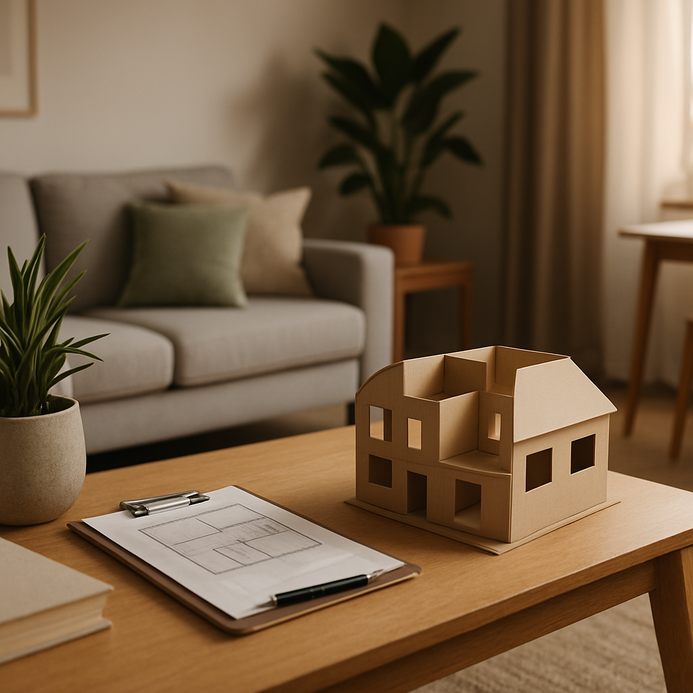10 Common Home Maintenance Issues and How to Fix Water Leakage
Introduction to Home Maintenance
Home maintenance isn’t just about keeping things looking nice, it’s essential for safety, comfort, and saving a few bucks here and there. A well-kept place? It not only looks sharp but also functions smoother. Believe it or not, if homeowners stay on top of maintenance, they can save around 1% to 3% of their property’s value every year. That’s a lot when it adds up, preventing hefty repair bills down the line.
Dealing with problems like leaks or drainage issues on your own can definitely keep your wallet happy. If you jump on these small problems early, they won’t turn into big headaches. Plus, DIY fixes for leaks can really boost your home’s resilience.
Common Water Leakage Solutions
| Problem | Solution | Estimated Cost (INR) |
| Wall Water Leakage | Seal cracks with waterproofing compounds | 800 – 3,000 per area |
| Roof Water Leakage | Install a waterproof membrane | 1,500 – 4,500 per square meter |
| Plastic Water Tank Leakage | Use repair kits for small leaks | 600 – 1,200 |
For those major leak troubles, it might be worthwhile to call in a pro or check out this guide on common water leakage problems and solutions.
Keep your eyes peeled and do regular checks around your home. It helps spot problems before they snowball. Want to dive deeper? Read our articles on DIY repairs, maintenance tricks, or wall sealing techniques.
Leaky Faucets: A Common Source of Water Waste
Leaky faucets, boy, are they common! And, sadly, often overlooked. That annoying drip might seem harmless, but it can really jack up your water bill over time. The EPA claims one leaky faucet can waste over 3,000 gallons a year. Yeah, that’s a big deal.
Causes of Leaky Faucets
The usual suspects for faucet leaks include:
- Worn washers: These little rubber discs just give out after a while.
- Corroded valve seats: Mineral build-up? Yep, it can erode parts and cause leaks.
- O-ring damage: This little seal around the faucet handle can wear down too.
Tools and Materials Needed
To patch up that leaky faucet, you’ll need a few things:
| Tool/Material | Description |
| Screwdriver | For removing the faucet handle |
| Adjustable wrench | To secure and loosen nuts |
| Replacement washers | New rubber washers or O-rings |
| Plumber’s tape | For sealing threaded connections |
| Bucket | To catch any excess water |
Step-by-Step DIY Fix
- Shut off water supply: Find those valves under the sink and turn them off.
- Remove faucet handle: Unscrew and lift that handle off.
- Inspect and replace washers: Take off the packing nut, then swap out any worn parts.
- Reassemble the faucet: Put everything back together snugly.
- Turn on water supply: Run the water and check for drips.
If things get complicated like with tank leaks, check out expert articles for more options. And hey, tech like machine learning can help out in spotting these leaks too.
Taking care of these fixes not only saves water; it saves cash too! If the leaks hang around, don’t hesitate to call in a plumber for wall or roof issues.
Running Toilets: Causes and Quick Fixes
Nothing’s worse than a toilet that just won’t stop running. It wastes so much water, it’s crazy. Common culprits include a faulty flapper valve, a float that’s set too high, or a worn fill valve. Here’s how to tackle them:
- Check the Flapper Valve: This rubber thing controls water flow. If it’s worn or off-kilter, it won’t seal right, just swap it out or adjust the chain.
- Adjust the Float: Too high? Water spills into the overflow tube. Just tweak the float arm or its height.
- Examine the Fill Valve: If this part doesn’t shut off, water keeps rolling in. A little cleaning or replacing might be in order.
- Look for Leaks: Do a dye test, drop some food coloring in the tank water. If it shows up in the bowl without flushing, you’ve got a flapper leak.
Quick Reference Table
| Issue | Description | Solution |
| Faulty Flapper Valve | Worn out or misaligned flapper allowing constant flow | Replace or adjust the flapper |
| High Float | Float set too high, causing overflow into the overflow tube | Lower the float position |
| Malfunctioning Fill Valve | Failure to shut off, resulting in continuous water flow | Clean or replace the fill valve |
| Leakage Test | Color from dye seeps into the bowl without flushing | Replace the flapper if leaking is confirmed |
Understanding and addressing these issues can keep your water bill manageable. For a deeper dive into leak solutions, visit Vertical Damp Proof Barrier or check out tips for Waterproofing in Buildings.
Clogged Drains: Clearing the Way
Clogged drains? Ugh, they’re the worst! If ignored, they sometimes lead to bigger headaches. Figuring out what’s stuck in there and using simple tools can save you plenty.
First, identify what’s causing the blockage. Hair, grease, soap scum, and random stuff tend to do the trick. Start by clearing out visible debris. If the clog runs deeper, reach for a plunger. If that fails, you might need a drain snake to get further down the line.
Quick Guide to Unclogging
| Method | Description | Suitability |
| Boiling Water | Dissolves grease | Kitchen sinks with a build-up |
| Baking Soda & Vinegar | Natural solution that clears clogs | General unclogging for all types |
| Plumber’s Snake | To reach deeper blockages | Persistent clogs that just won’t budge |
| Wet/Dry Vacuum | Great for watery clogs | Sinks or tubs with excess water |
Prevent problems before they happen. Regularly clean your drains using baking soda and vinegar. Keeps pipes clear and gets rid of odors too.
If persistent issues arise, it could mean serious trouble down the line, like wall or roof leakage. Professional help might be needed. For quick fixes for a plastic water tank, high-quality sealants can offer temporary solutions while waiting for a pro.
Staying on top of maintenance can spare you from costly repairs and keep your home comfy. For more insights, check out our articles on home plumbing solutions!
Peeling Paint and Squeaky Doors: Cosmetic and Mechanical Fixes
Let’s talk about those pesky issues, peeling paint and squeaky doors. They might seem trivial, but they can really throw off the vibe of your home. Good news? They can often be fixed with a little DIY effort.
Peeling Paint: Quick Fixes
Peeling paint usually comes from moisture, shoddy prep, or wild weather. Fixing leaks is key to stopping moisture from ruining your walls. Start by scraping off the peeling bits with a putty knife. Sand ‘em down for a smooth finish. Here’s a quick rundown:
| Step | Description | Tools Needed |
| 1 | Scrape off peeling paint | Putty knife, sandpaper |
| 2 | Clean the surface | Cloth, primer |
| 3 | Apply primer | Paintbrush |
| 4 | Paint with quality paint | Paint, roller |
After your new coat dries, some waterproof solutions can help guard against wall leaks, too.
Want to know more? Look into Damp Proofing for some solid info.
Squeaky Doors: Easy Solutions
Squeaky doors? Super annoying! Mostly, it’s because of rusty or dry hinges. A quick oil fix can quiet them right down. Here’s how:
- Identify the Squeaky Door: Open and close it to find where the noise is coming from.
- Lubricate the Hinges: A dab of oil like WD-40 or even olive oil on the hinges should do the trick.
- Move the Door: Open and close it a few times to spread the oil around.
This neat little fix can really boost your home’s feel. If it keeps squeaking, maybe there’s an underlying leak affecting the frame.
Need more repair tips? Check out this guide on best waterproofing methods.
In short, tackling peeling paint and squeaky doors can make a real difference in how your home looks and feels. Keeping an eye out for leaks can save you from bigger repairs later. For ongoing tips, check out our articles on common homeowner issues.
Conclusion: Empowering Your Home Maintenance Skills
Home maintenance is vital for a safe, comfy living space. Learning the ropes helps you save cash and can extend the life of your home. Here are some key points to keep in mind:
- Know Common Issues: Water leakage is a biggie in homes. Recognizing its different forms like wall leaks, roof leaks, or tank issues can help you know where to focus.
- DIY Solutions: So many problems are fixable with just a few tools and a bit of know-how. Assess places for cracks or dampness for effective leakage solutions.
- Proactive Maintenance: Regular checks can sidestep bigger issues. Make it a habit to inspect plumbing, roofing, and water tanks every season.
- Educate Yourself: Tap into online resources and local experts. You can find loads on damp and waterproofing techniques at Damp Proofing and Waterproofing Methods.
- Use Technology: Tools like water flow detection devices can boost your chances of spotting leaks right away. Some research says these devices can find leaks as small as 100 mL/min, helping you stay on top of water use [Water Flow Detection Device].
In a nutshell, arming yourself with knowledge about common issues and affordable fixes is power. Keep a checklist of maintenance tasks, with tips on handling things like waterproofing and leak detection. It’ll make for smoother upkeep and a better home life.
Want more on home repairs? Check out our article on Best Solution for Wall Seepage.
FAQ
- Q1. What are the most common home maintenance tasks?
- Common tasks include checking for leaks, cleaning gutters, inspecting HVAC systems, and changing air filters.
- Q2. How often should I check my plumbing?
- It’s recommended to check plumbing for leaks and clogs at least once a season.
- Q3. How do I know if my house needs waterproofing?
- Signs include peeling paint, damp spots on walls, or recurring mold growth.
- Q4. Can I fix my own plumbing issues?
- Many minor plumbing issues, like leaky faucets or clogged drains, can be fixed DIY with the right tools and guidance.













